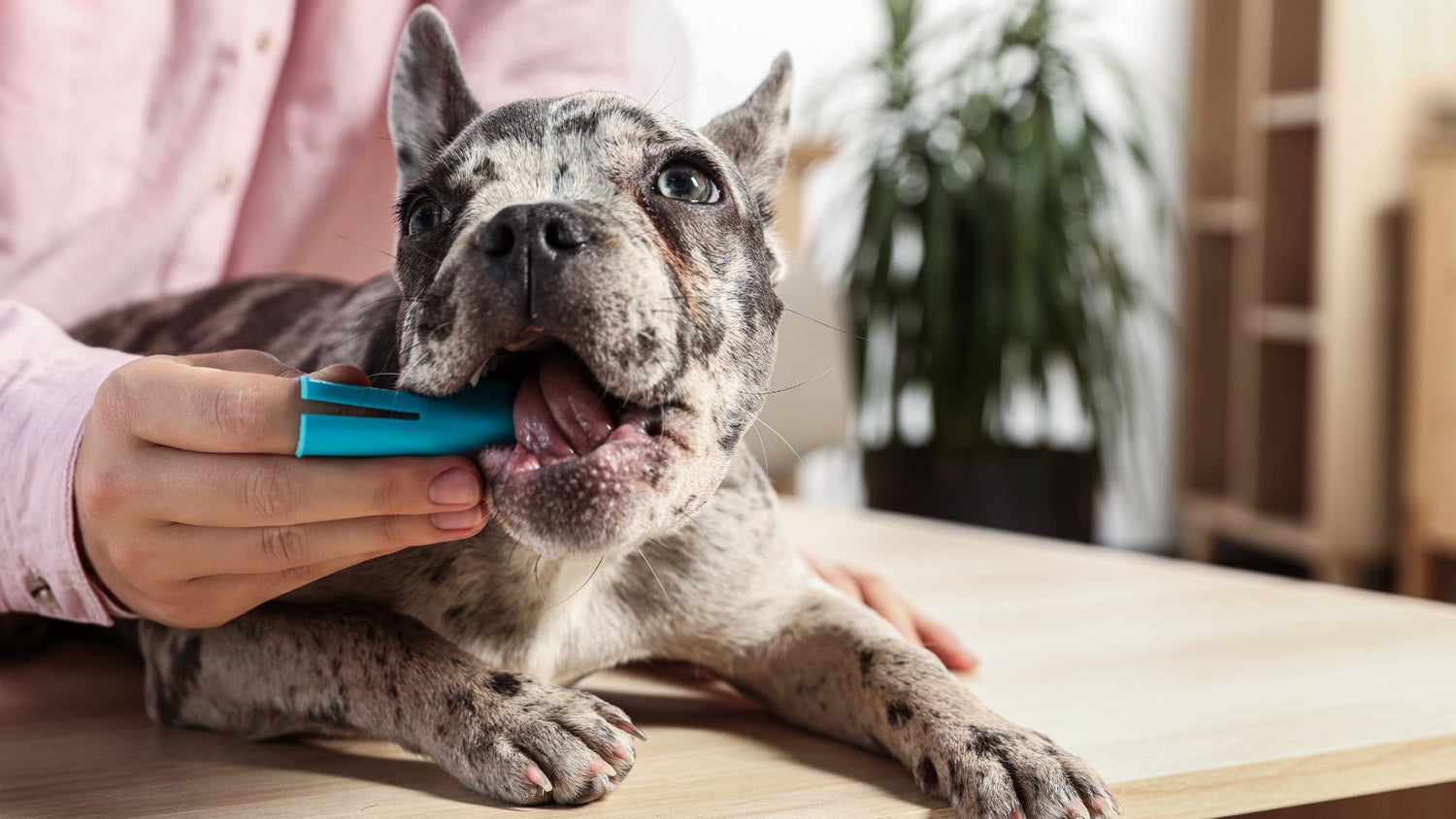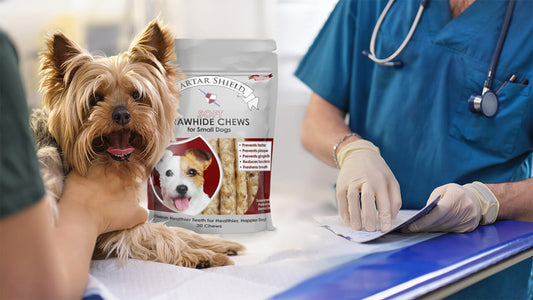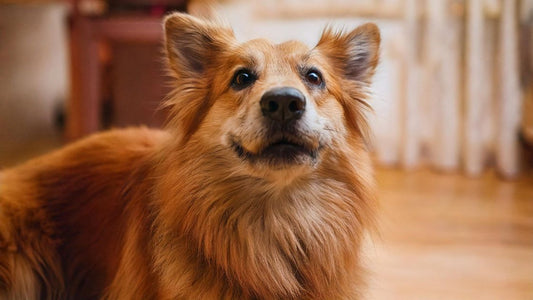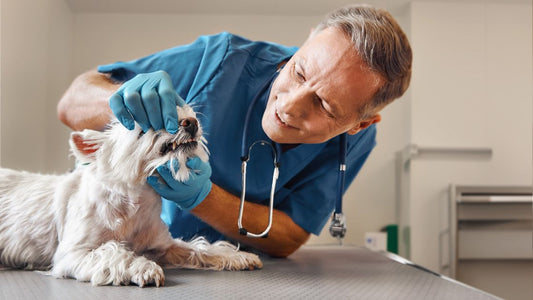You have probably heard that the most common disease in dogs is periodontal disease—inflammation in the gums caused by tartar buildup, which can lead to bad breath, tooth decay, painful infections, and even organ damage if bacteria reaches the bloodstream. The key to prevention is to remove plaque before it hardens into tartar, and your best line of defense is daily brushing.
The vast majority of dog owners say they don’t brush their pet’s teeth regularly (or at all!), yet the Veterinary Oral Health Council (VOHC) recommends brushing your dog’s teeth every day. This might seem daunting if your dog is not used to having their teeth brushed, but with the right supplies and a little patience, you can set yourself—and your pooch—up for toothbrushing success.
Learn to Brush Your Dog’s Teeth in 6 Simple
Step 1: Gather your supplies.
You will need:
- A toothbrush. Dog toothbrushes have soft bristles and angled handles to help you reach the back of your dog’s mouth, and finger brushes are a great option for puppies and smaller breeds. New, soft-bristled human toothbrushes also work—choose a pediatric brush for puppies and small breeds, and an adult brush for larger dogs.
- Toothpaste formulated for dogs. Never use human toothpaste! It usually contains fluoride, which shouldn’t be swallowed, and xylitol, which is toxic for dogs. Pet toothpaste is safe when swallowed and is available in your dog’s favorite flavors such as poultry and beef.
- Plenty of treats. You want toothbrushing to be a positive experience, so make brushing more enjoyable by keeping your dog’s favorite treats handy and offer praise and rewards as you work your way through the training process. Try Tartar Shield treats for even more plaque-fighting power between brushes.
- Patience! It might take a few weeks to teach your dog to accept a full toothbrushing session. Work on it a little each day, follow your dog’s cues, and give them time to become comfortable with each step before moving on. It is important to start brushing as a puppy because the older a dogs get, the harder it is to incorporate brushing into your daily or weekly routine.
Step 2: Carefully select your setting.
Choose a time when your dog is calm and relaxed, such as after playtime or a mealtime, and find a quiet area without lots of activity or distractions. Find a comfortable place to sit with your dog, such as next to them on the floor or in a chair with their head in your lap. Avoid holding your dog down or standing over them, which could be intimidating—you want to make sure your dog is comfortable and happy.
Step 3: Start slow and build trust.
Your first task is to help your dog become comfortable with your fingers in their mouth, which may take several days or weeks. Don’t try to open your dog’s mouth. Instead, pet their muzzle and then gently lift the upper lip with one hand, and with the other hand rub your fingers back and forth on the outside of their teeth and gums. Once your dog accepts that, touch the lower teeth as well, rewarding with lots of praise and a treat as you go. Make sure your pet stays comfortable and relaxed—if they become upset or anxious, stop and try again later. If your dog is extremely resistant, try a little peanut butter or other wet food on your finger the first few sessions to make things more enjoyable as your dog learns to accept your fingers in their mouth. Some pet brands offer tempting flavors, such as peanut butter and bacon-flavored toothpaste that can be used as well.
Step 4: Try the toothpaste.
Put a little dab of dog toothpaste on your finger or even a gauze pad, and let your pup smell it and lick the toothpaste off. Then, add another dab and gently rub it on their teeth and gums. Once your pup is comfortable with this step, you’re ready to introduce the toothbrush.
Step 5: Time to brush!
Let your dog sniff and lick the toothbrush before adding a small amount of toothpaste. Then, gently lift and hold the top lip with one hand, and use your other hand to move the bristles back and forth in circular motions over the outside of the back teeth and gumline. Hold the toothbrush at a 45-degree angle, with the bristles pointing up toward the gums. Brush just a couple of teeth at a time, and then offer a treat before moving on.
You may just brush a few teeth at first if that’s all your pet will accept, and that’s OK! Focus your efforts on the outer surfaces of the teeth (especially the canines and back teeth), including the gumline, as that’s where plaque collects the most—the tongue removes a lot of the plaque from the insides. Gradually work up to brushing the outside surfaces of all teeth on the top and bottom for at least 30 seconds per side. If your dog will tolerate more, you can then work on brushing the insides of the teeth. Always end the session on a positive note—stop before your dog becomes uncomfortable, and end each session with praise and a treat to help develop a positive association with brushing.
Step 6: Set a routine.
Now that you and your dog are toothbrushing pros, be sure to incorporate this new habit into your daily routine. Commit to a time to brush together every day, such as after your morning walk or before bedtime. If this is difficult to work in some days, don’t stress—while daily brushing is the best way to protect your dog from plaque buildup, you’ll still reap major benefits from brushing at least three times a week. And make sure you talk to your veterinarian about scheduling regular professional dental cleanings too as part of your dog's dental healthcare routine.
Combine Toothbrushing with Tartar Shield for Better Oral Health
With time and practice, most dogs will learn to accept having their teeth brushed. However, some dogs might be extremely fearful or resistant, making it difficult or even impossible for you to clean your dog's teeth effectively. If you find that your dog just won’t cooperate, talk to your vet about your concerns, and count on Tartar Shield Pet Products to help you keep your pup’s teeth clean and gums healthy.
Tartar Shield dog biscuits, rawhide chews, water additive, and sprinkles are all clinically proven to help prevent plaque and tartar buildup, making them a great way to clean your dog’s teeth between brushings or when brushing just isn’t practical. Shop our full-line of at-home dog and cat dental care today!



